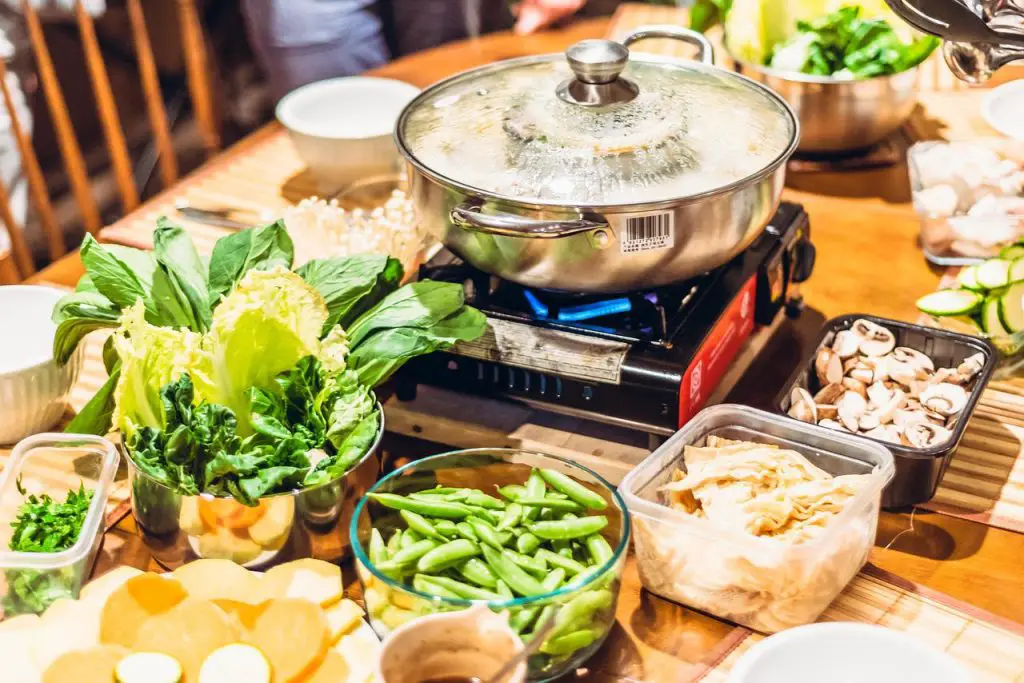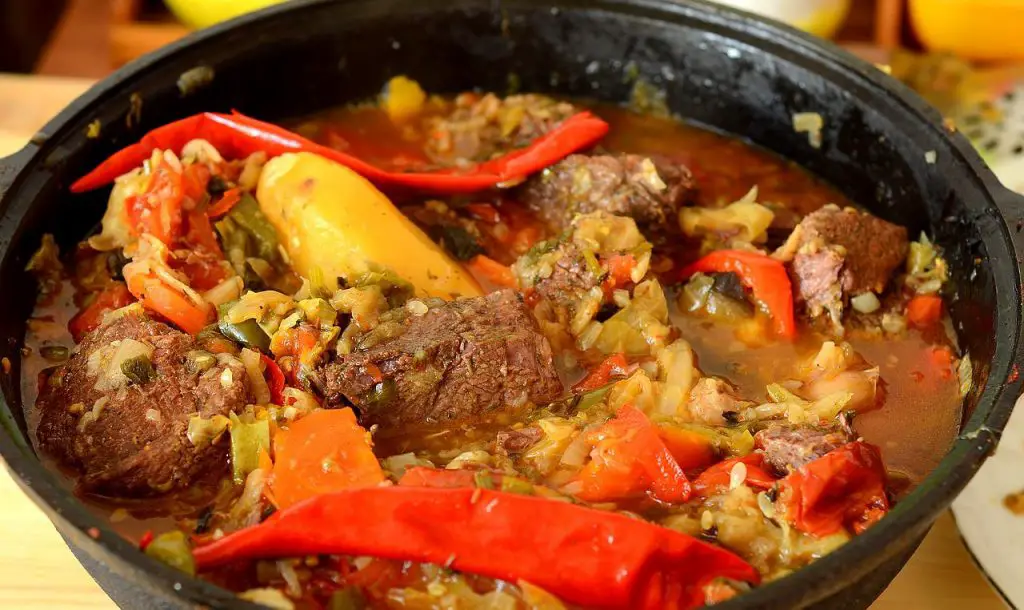The Difference Between Hot Pot And Stew: A Foodie’s Guide
Traditional stews and hot pots are both types of soup that are typically served in the colder seasons.
However, while both of these types of soups have many similarities, there are also some important differences between them.
This article will discuss the main differences, including their ingredients, cooking methods, serving suggestions, and more.


What is a hot pot?
In Asia, a hot pot is a type of food that is typically cooked at a table instead of in a pot on the stove.
During hot pot meals, diners can choose from a variety of raw and cooked ingredients for their food.
The ingredients are placed in a vat or large bowl and are then cooked in a broth or soup that is ready at the table.
Some popular hot pot ingredients include vegetables, meat, seafood, tofu, noodles, and wontons.
Commonly served soups or broths include miso, shio, oyster, and sesame. A raw vegan hot pot is also gaining popularity.
What is a stew?
A stew is a type of soup that is typically cooked at a stovetop or in the oven. Stews are generally thicker than hot pots, with a meat base and often contain vegetables.
Some popular stew ingredients include beef, pork, chicken, lamb, rabbit, vegetables such as carrots, onions, celery, potatoes, and turnips, as well as herbs and spices.
Commonly served stews or soups include French onion, classic beef, classic chicken, classic vegetable, classic herb, and classic seafood.
How are hot pot and stew different?
While both hot pots and stews are soups, they have some important differences. Stews generally use a higher amount of meat than hot pots, but both can contain non-meat ingredients.
Stews are often Simpler to make. Stews are made by simmering meat and/or vegetables in water or broth in a pot or baking in the oven.
Stews are generally thicker than hot pots, with a meat base and often contain vegetables.
Stew ingredients can include non-meat ingredients.
Popular hot pot and stew ingredients
Hot pot and stew ingredients can vary greatly depending on the region of the world. As there are many similarities between hot pots and stews, the following ingredients are just a few of the most common ones used in both types of soups.
Vegetables – Hot pots and stews often both contain a large amount of vegetables.
- Hot pots and stews often both contain a large amount of vegetables. Noodles – Hot pots and stews often both contain noodles, as well as different types of noodles.
- Hot pots and stews often both contain noodles, as well as different types of noodles.
- Fruits are often served in both hot pots and stews. Herbs and spices – Many hot pot and stewing dishes use herbs and spices.
- Many hot pot and stewing dishes use herbs and spices. proteins – Both hot pots and stews often contain proteins, such as meats, seafood, and/or vegetables.
- Both hot pots and stews often contain proteins, such as meats, seafood, and/or vegetables.
- Fats and oils are often used in hot pots as well as in stews.
Conclusion
Hot pots and stews are both types of soup. However, while hot pots are typically lighter in texture and flavor, stews tend to be thicker and more savory.
While there are many similarities between hot pots and stews, there are also some important differences between them.
Keep in mind that the main difference between hot pots and stews is their level of complexity.
Hot pots are generally less complex than stews, as stews usually require a longer cooking time and use a higher amount of salt and fat.
However, both types of soups are great choices for hearty winter meals.

